| Srl | Item |
| 1 |
ID:
158083
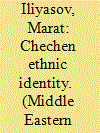

|
|
|
|
|
| Summary/Abstract |
This article critically assesses the ostensible transformation in Chechen ethnic identity. Journalists and scholars who came to this conclusion based their claim on obvious changes in Chechen behavior. The brave and irreconcilable resistance the nation demonstrated during the First and the Second Russo-Chechen Wars of 1994–1996 and 1999–2009, respectively, was replaced by a submissive and loyal stance with regard to the new authorities and recent enemies. This article investigates whether such a change in behavior reflects a corresponding change in ethnic identity. This article asserts that ‘non-Chechen’ behavioral models do not signify changes in Chechen ethnic identity by presenting and analyzing Chechen narratives concerning the question. In summary, this article concludes that the ethnic identity of the nation remained mainly untouched. This conclusion is supported by the observed continuity of Chechen resistance, which has always been driven by cherished values such as freedom.
|
|
|
|
|
|
|
|
|
|
|
|
|
|
|
|
| 2 |
ID:
111817
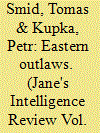

|
|
|
| 3 |
ID:
072123
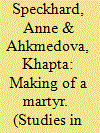

|
|
|
|
|
| Publication |
2006.
|
| Summary/Abstract |
Beginning in June of 2000 Chechen terrorists have carried out twenty-eight acts of suicide terrorism acts including two mass hostage taking operations combined with suicide terrorism (Beslan and Nord Ost). This paper reports the findings from psychological autopsies (interviews with close family members and friends) of thirty-four (out of 112 total) of these human bombers as well as augmenting them with material from hostage interviews from Beslan and Nord-Ost. The authors analyze the phenomena on the levels of the organization, individual, society and in terms of ideology and compare findings from other arenas also involving suicide terrorism. The main findings are that a lethal mix occurs when individuals in Chechnya are vulnerable to self recruitment into suicide terrorism due to traumatic experiences and feeling a duty to revenge and this vulnerability is combined with exposure to groups that recruit and equip suicide terrorists with both an ideology and the means to explode themselves. The ideology supporting Chechen suicide terrorism is very similar to the global jihadist ideology but remains more nationalist in its goals. It functions for the bombers much like short lived psychological first aid-answering their posttraumatic concerns in a way that shortly leads to their deaths. Unlike the Palestinian case, there is little social support for suicide terrorism in Chechnya.
|
|
|
|
|
|
|
|
|
|
|
|
|
|
|
|
| 4 |
ID:
129435
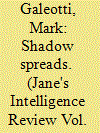

|
|
|
| 5 |
ID:
116316
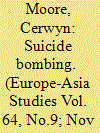

|
|
|
|
|
| Publication |
2012.
|
| Summary/Abstract |
This essay analyses Chechen-related suicide attacks, locating them within the historical and political context of the anti-Russian insurgency in the North Caucasus and the different factions of the anti-Russian armed resistance movement in the period between the first and second Russo-Chechen wars. The core of the essay is an analysis of the different character of two waves of suicide operations, (2000-2002) and (2002-2004). The first wave was linked to nominally Islamist groups, whereas the second set of attacks were linked to Operation Boomerang devised by Shamil Basaev. Finally, the essay considers other attacks that do not fit into either of these two waves of terrorism.
|
|
|
|
|
|
|
|
|
|
|
|
|
|
|
|